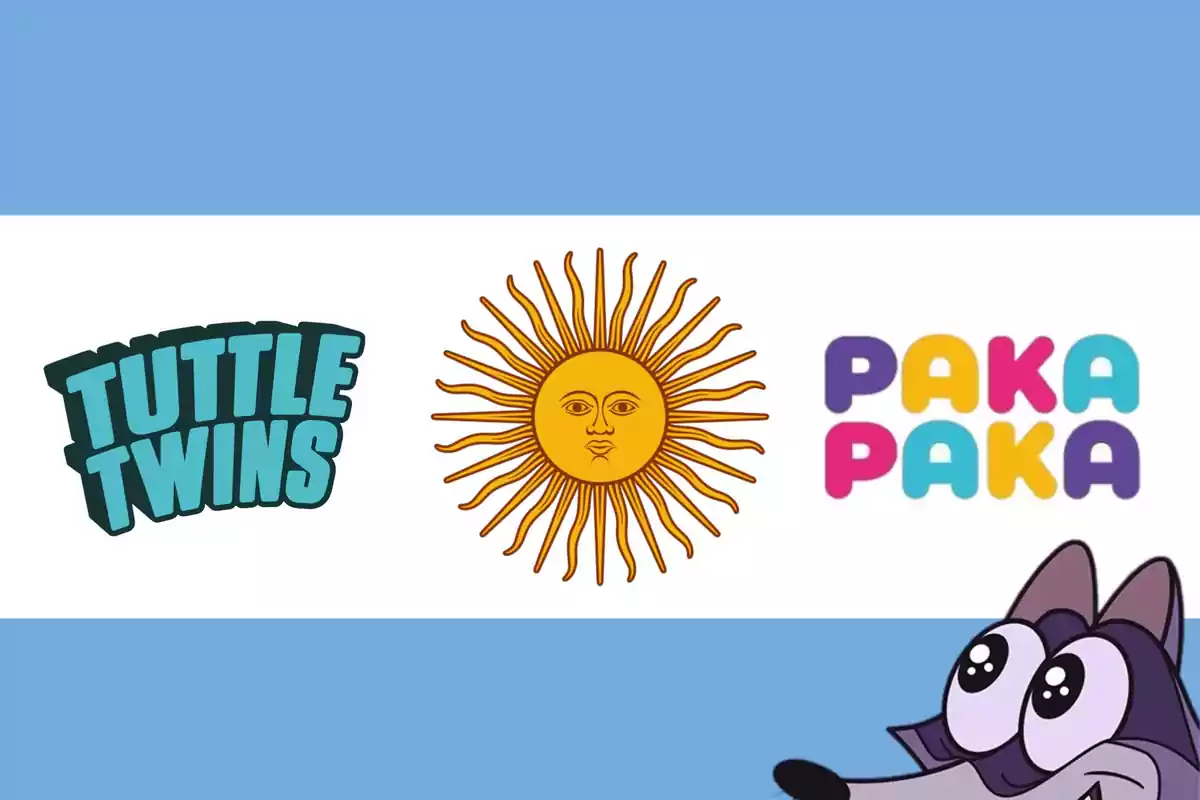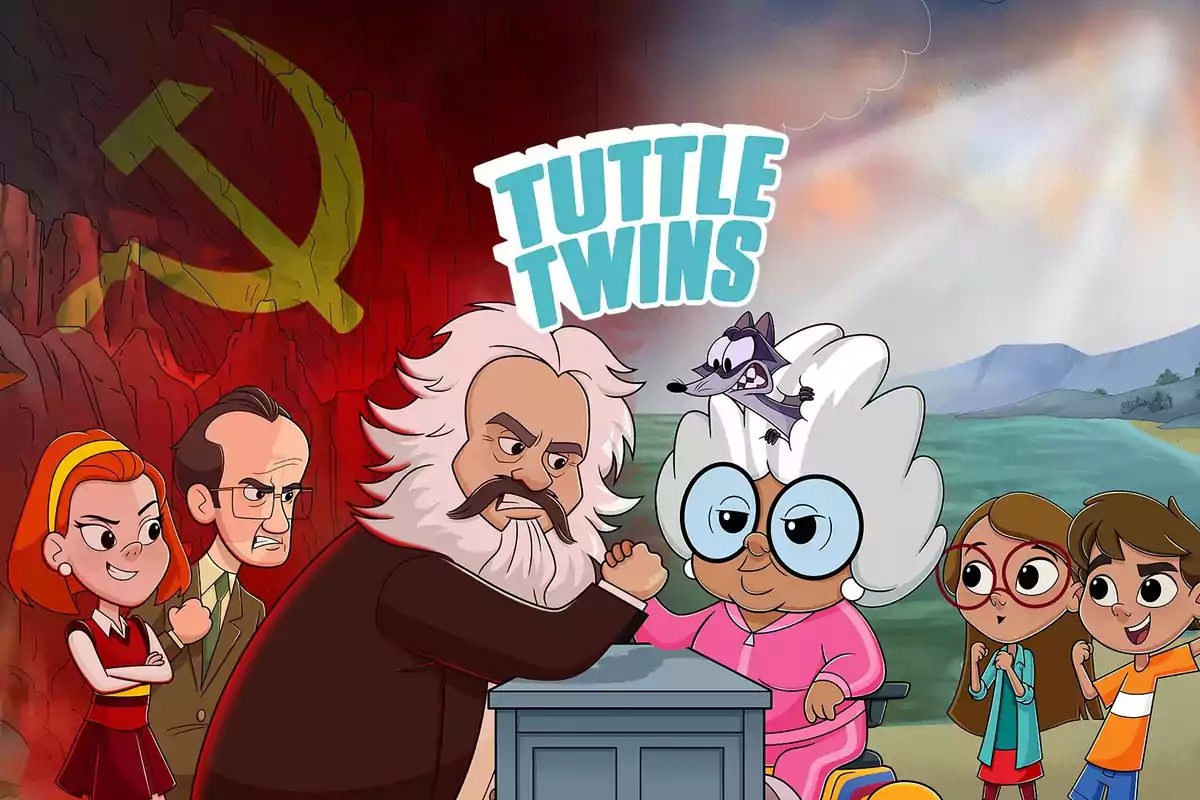
Pakapaka, Gramsci and the cultural battle: why the Tuttle Twins tell the truth
The violent reaction from the left demonstrates that its ideological monopoly on TV is beginning to crack
In recent days, the relaunch of the children's channel Pakapaka by the government of Javier Milei has sparked an unexpected controversy. The announcement of the addition of the animated series "Tuttle Twins" to the programming line-up caused a virulent reaction from progressive sectors that have historically defended the channel as an educational bastion of the State.
However, the controversy doesn't arise from the pedagogical content, but from the ideological content. Why is it so disturbing for two children to learn about economics, individual rights, and freedom?
To understand what is at stake, it is necessary to look beyond a television channel. The key lies in the Gramscian theory of cultural hegemony. Antonio Gramsci, Italian communist ideologue, argued that achieving a socialist revolution is not enough by seizing political power; it is necessary to dominate the common sense of society.
Gramsci said that this conquest is achieved through educational institutions, the media, art, and popular culture. "Take culture and education, and the rest will be added unto you," he wrote. Ultimately, it is a slow but persistent colonization of the collective imagination.

Pakapaka's objective
Pakapaka was born in 2010 as part of that project. In the name of childhood and education, the channel was used by Kirchnerism as a platform for ideological dissemination. Programs such as "La asombrosa excursión de Zamba" not only taught history; they taught a militant history.
San Martín, Belgrano, and Moreno were turned into allies of the "national and popular project," while opponents were caricatured or demonized. In one episode, Zamba faces Cornelio Saavedra as a symbol of the conservative right; in another, the child travels through time to support Perón, Evita, and even Chávez in a single continental narrative. Zamba, the central character, was the ideal child of the Patria Grande, a kind of Che Guevara in a school smock.
Another example is the series "Siesta," which depicted social realities from a biased perspective, or "Petit," a production that normalized ideological constructs under the guise of teaching values. Even state-produced educational segments such as "Historias de cronopios y de famas" mixed surrealism with nods to leftist thought. In all cases, the message was not neutral.
The use of national heroes and shared symbols as a tool for children's indoctrination was not accidental. It was strategic. Gramsci would be proud. By appropriating national elements—the flag, the cockade, the founding fathers—and resignifying them from an ideological perspective, it was possible to influence the perception of history, politics, and the present.
This maneuver allowed entire generations to spontaneously associate concepts such as social justice, redistribution, or an active State with the banners of a single political space.

Tuttle Twins on Pakapaka
For this reason, the arrival of the Tuttle Twins on Pakapaka represents a direct threat to the cultural status quo. Based on the books by Connor Boyack, the series seeks to teach young people essential notions of market economics, individual rights, private property, and critical thinking.
The episode about Karl Marx is paradigmatic: it presents the philosopher as a historical figure whose ideas, although influential, proved devastating in practice.
In that episode, the twins Ethan and Emily travel to the past and meet Marx in person. They see him develop his ideas about class struggle, the abolition of private property, and the communist manifesto. However, the most valuable aspect is not only what they show, but how they contrast it with reality.
The children talk with other characters who explain to them how Marxist ideas led to totalitarian systems, impoverished millions of people, and caused genocides in the name of equality.
This approach is not an invention of the scriptwriters. It is supported by abundant bibliography. "The Black Book of Communism" (Stéphane Courtois, 1997) documents over 100 million deaths under communist regimes. "The Gulag Archipelago" by Aleksandr Solzhenitsyn describes the Soviet repression system in stark terms.
Even progressive intellectuals such as Tony Judt have admitted the failures of Marxism in his work "Postwar." The fact that the Tuttle Twins bring these topics to the table in children's language is not trivial: it is revolutionary.
The outrage caused by the series is not due to its format or quality, but to its content. The Tuttle Twins are accused of indoctrination when in reality they are countering decades of indoctrination.
The left fears losing the narrative monopoly. When Zamba strolls with San Martín, no one shouts indoctrination. When Ethan and Emily Tuttle talk about inflation, taxes, or freedom, alarms are immediately triggered.
The Tuttle Twins are not inventing anything. They recover classic ideas of liberal thought and translate them into accessible language. Frédéric Bastiat, John Locke, Adam Smith, Friedrich Hayek, Milton Friedman, Ayn Rand: all are part of that universe of thought that promotes freedom as a foundational value.
As Ludwig von Mises said: "Education should not be an instrument for molding young people according to a doctrine, but for enabling them to think for themselves." That is precisely the essence of this series.
In that sense, the Tuttle Twins function as a form of political literacy that compensates for years of intellectual depletion in school content. As authors such as Thomas Sowell have pointed out in "Visions and Illusions," ideas do matter, and not all are equal. Teaching children that there are different worldviews is not only not dangerous, it is necessary.
Critics argue that children should not be exposed to ideological content. But is it not ideological to teach that Argentine independence was exclusively the result of popular struggle and not also of economic tensions, commercial interests, and geopolitical contexts? Is it not ideological to hide the consequences of real communism and present capitalism only as a force of oppression?
The series' opponents have even invoked the religion of its creators to delegitimize it. Angel Studios, the production company, has Mormon roots. But since when does religious affiliation invalidate audiovisual content? Was not the figure of Chávez or Evo Morales openly promoted?
The cultural battle is not fought only in Congress or in the media; it is fought every day in classrooms, on screens, in bedtime stories. It is a battle worth fighting.
The Pakapaka case is paradigmatic because it unmasks the mechanism of state appropriation of children's content. It is not about replacing one dogma with another, but about opening up the game. About allowing plurality. About teaching children how to think, not what to think.
The fact that the Tuttle Twins are so bothersome to those who have dominated the official narrative for years is, deep down, a good sign. It means that the ideological monopoly is beginning to crack. There is a new generation willing to fight the battle from the very first episode. Perhaps, for the first time in a long time, freedom has a voice in the kindergarten playground.
More posts: